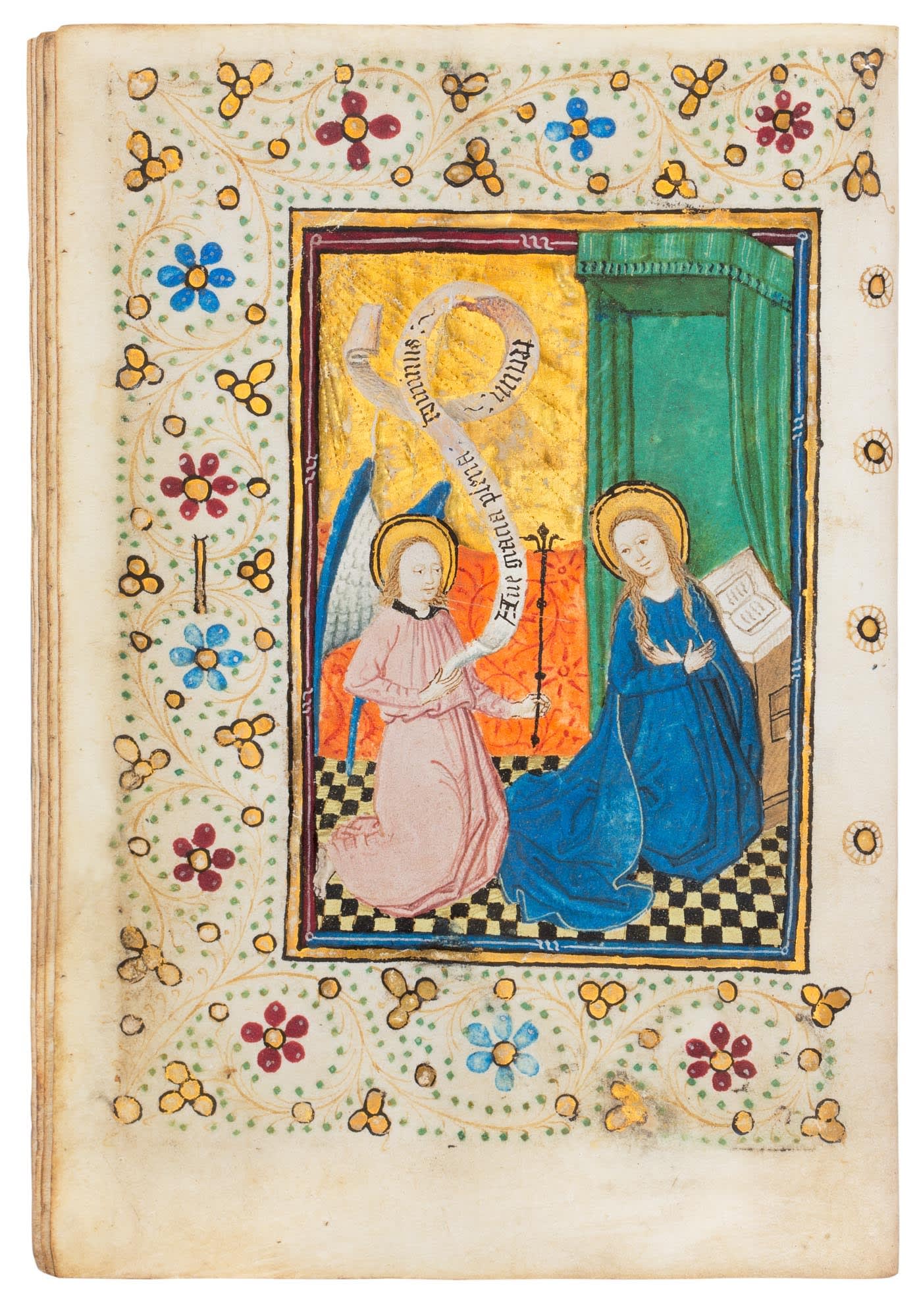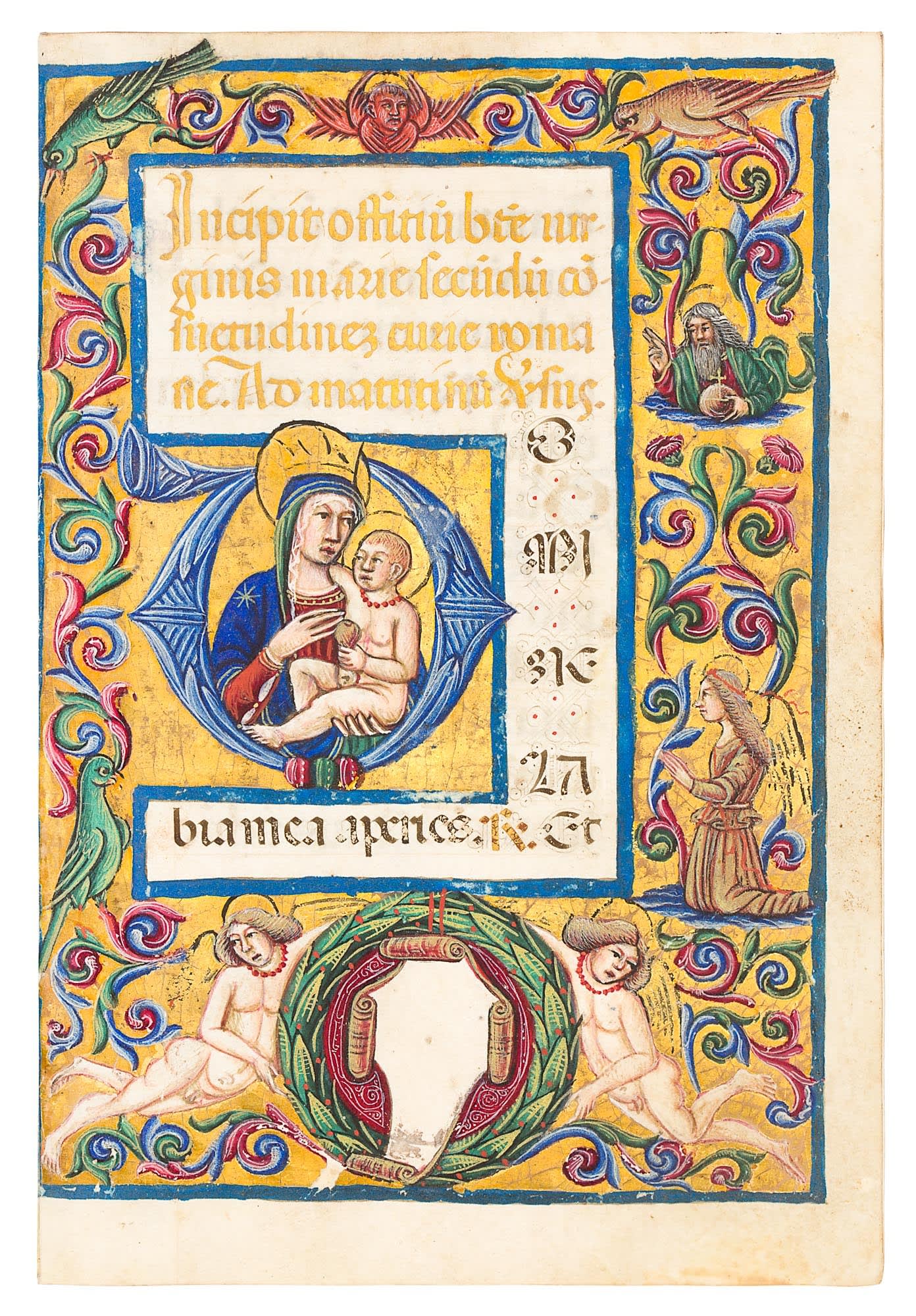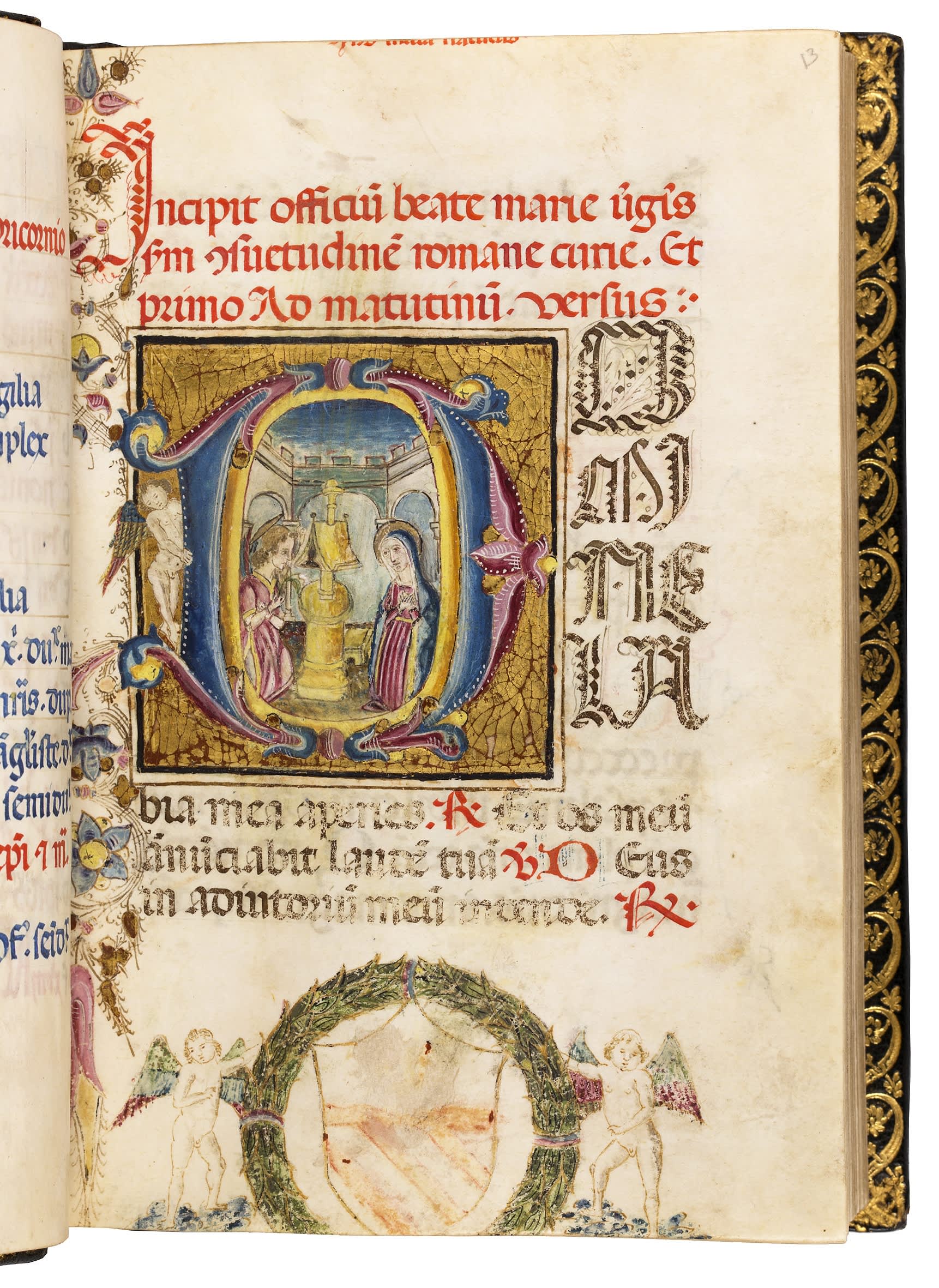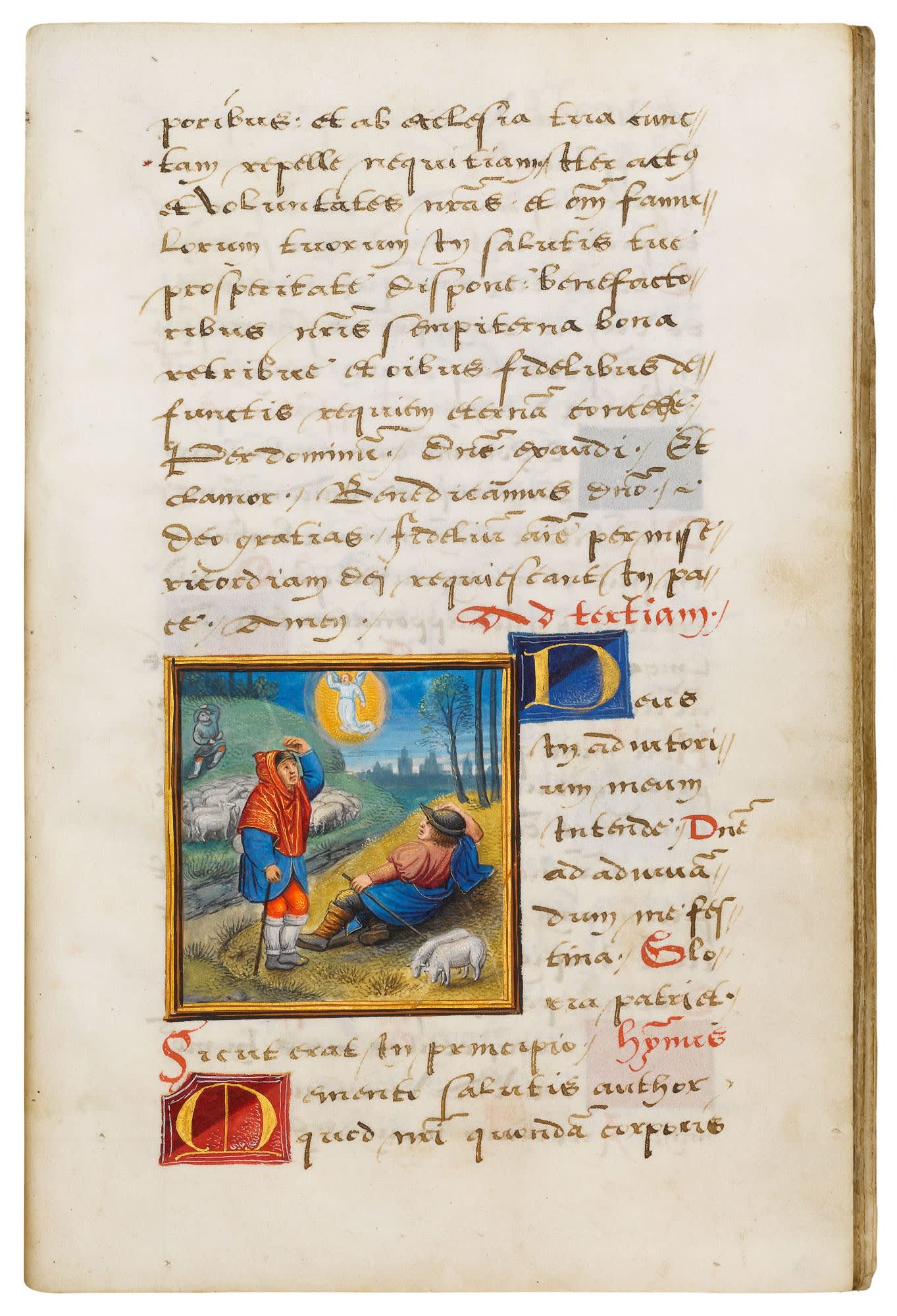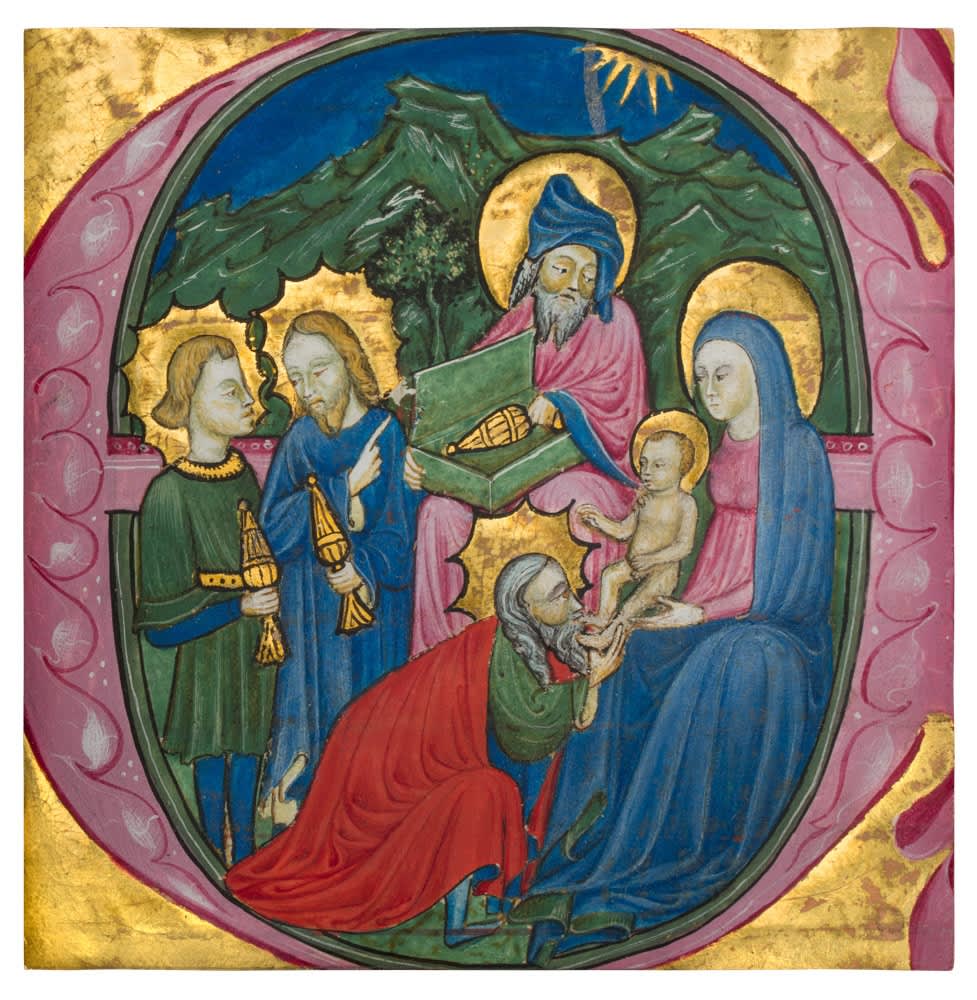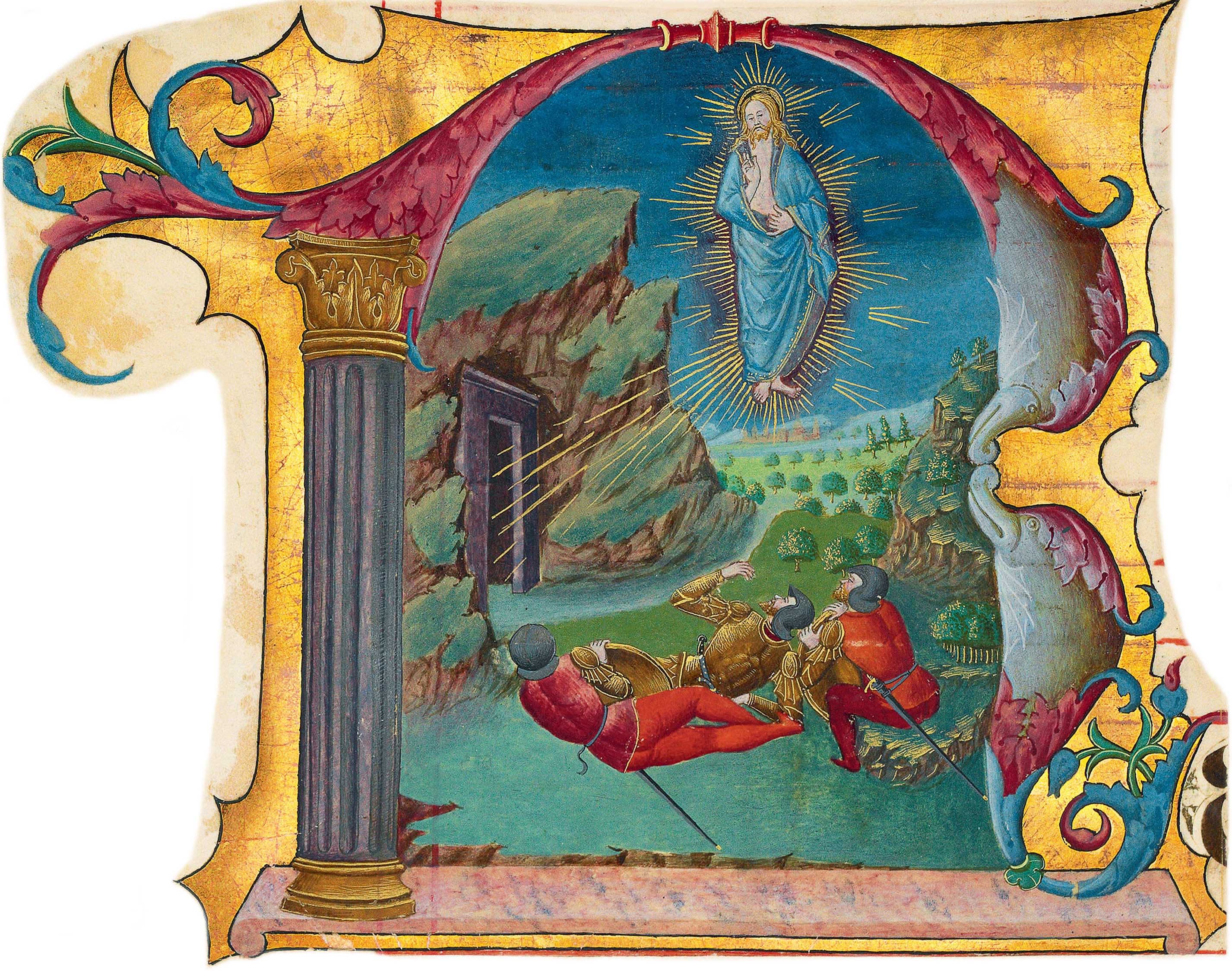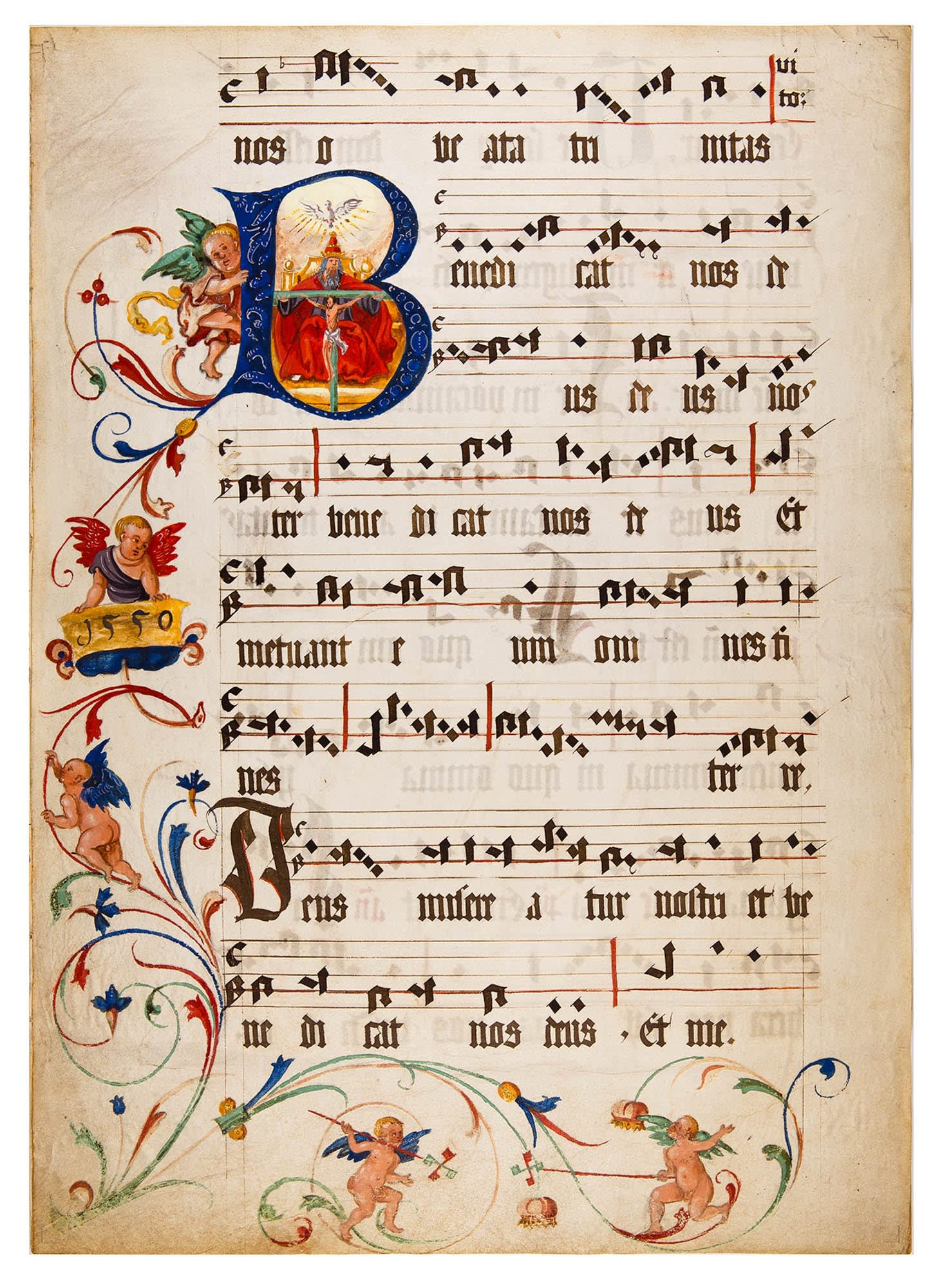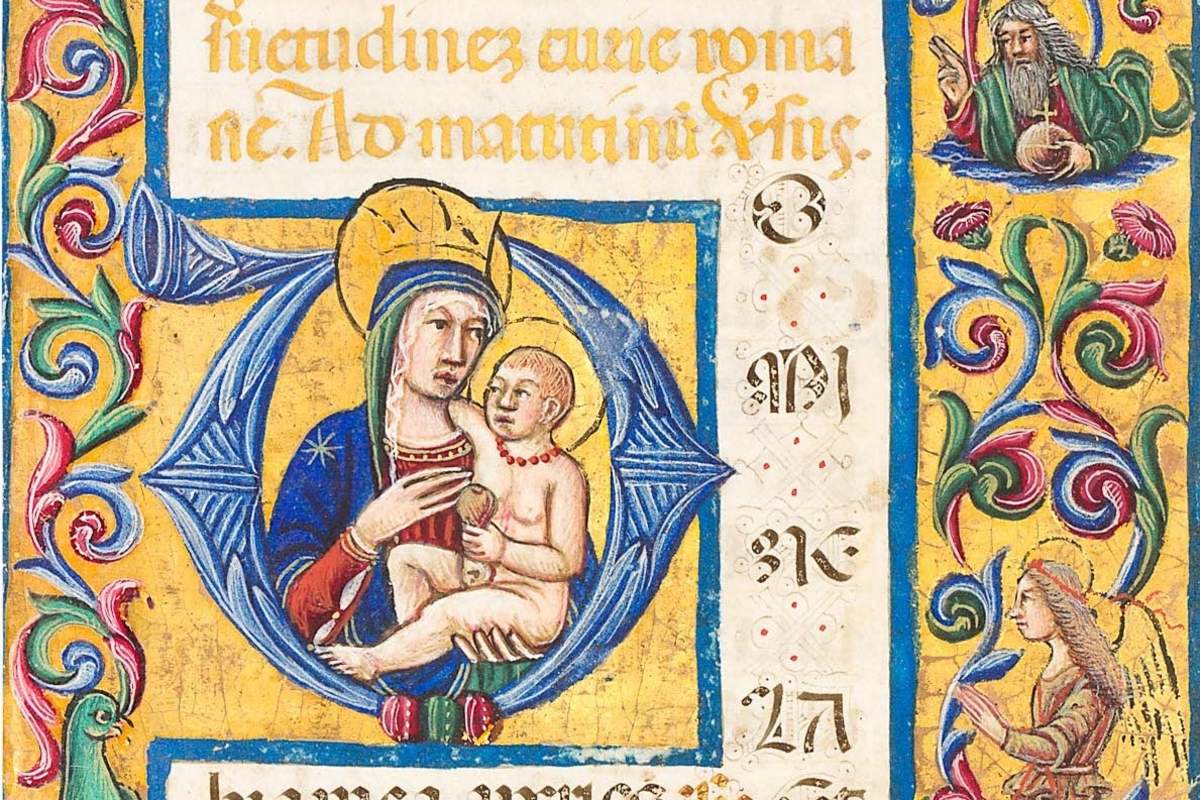
Art fair visitors often approach us at our stand and say to us:
"I am interested in collecting medieval illuminated manuscripts, but I'm not sure where to begin."
First and foremost, you should love the artworks with which you live, so we always advise you to get a good sense of what aesthetic styles and what themes attract you the most. From there, knowing your budget is also essential. Below, you will find our Top Ten suggestions for great works of illumination that are perfect for the beginning collector.
Books of Hours
Manuscript Books of Hours from all over Europe offer a wide variety of styles and price ranges. These beautiful prayer books are a perfect way to begin collecting medieval and Renaissance art because they offer multiple paintings in a single small package. They are easy to admire and handle as well as to show off to the art aficionados in your close circle of friends and family.
With shining gold grounds behind its charming illuminations, this Book of Hours written in Dutch is a wonderful example of the artwork of this region. It was produced by the Brothers of the Common Life, a religious community who supported themselves through manuscript production. This example even retains its original binding, a rare treat for bibliophiles and collectors.
This Italian prayerbook from Siena, Italy is beautifully painted with holy scenes in historiated initials. Rondels in the bottom border include prayers and other Biblical scenes and figures. Its full borders on gold grounds incorporate portrayals of God, angels, birds and animals, and twirling acanthus and flowers. Also impressive are the beautifully written gold text highlights, as we see above. The joy and humour of the artist, Bernardino Cignoni, is easily convonveyed.
3) Serainchamps Book of Hours, use of Ghent and Liège
Illuminated manuscript on vellum, Masters of Adolph of Cleves
10 full-page miniatures with full borders
Flanders, Ghent c. 1480
This special, Flemish manuscript was personlised for its original owners, Pierre Serainchamps and his wife, whose name began with a J. It includes their coats of arms, Pierre's devices and his motto, as well as his and his wife's initials intertwined by a love knot. Pierre is actually shown in the manuscript on f. 159v before an image of St. Peter, his name saint. The illumination in the manuscript is a good example of the Ghent-Bruges school, with wonderful trompe-l'oeil flowers, fruit, acanthus, and insects.
4) Book of Hours for the use of Rome
Illuminated manuscript on vellum, written by Johannes Francigena
5 large historiated initials
Italy, Rome(?), 1494
This Book of Hours is among the rare examples dated and signed by its scribe (on f. 140v). It was written out by the Franciscan Friar, John of France (Johannes Francigena) OFM, and completed 5 March 1494. The book was likely intended to be used by a lay woman, who would have taken her relgious instruction from a Franciscan monk. A large series of Italian prayers within the book suggests the text's personalisation for its first owner.
From the circle of the great Flemish artist Simon Bening, the artist of this lovely Book of Hours captured the great artist's talent for beautifully glowing light and intimate settings. The manuscript was possibly made for a French-speaking noblewoman named Margaret, implied through the inclusion of St. Margaret and French textual rubrics. Unidentified coats of arms of this woman and her husband offer a mystery still to be unravelled.
Individual Leaves
Many illuminated leaves from medieval manuscripts also circulate as framed paintings. These pieces are typically less expensive than an entire manuscript, also represent a wide variety of styles and origins, and will fill your walls with powerful colour and gold from the most cherished artists of the Middle Ages and Renaissance.
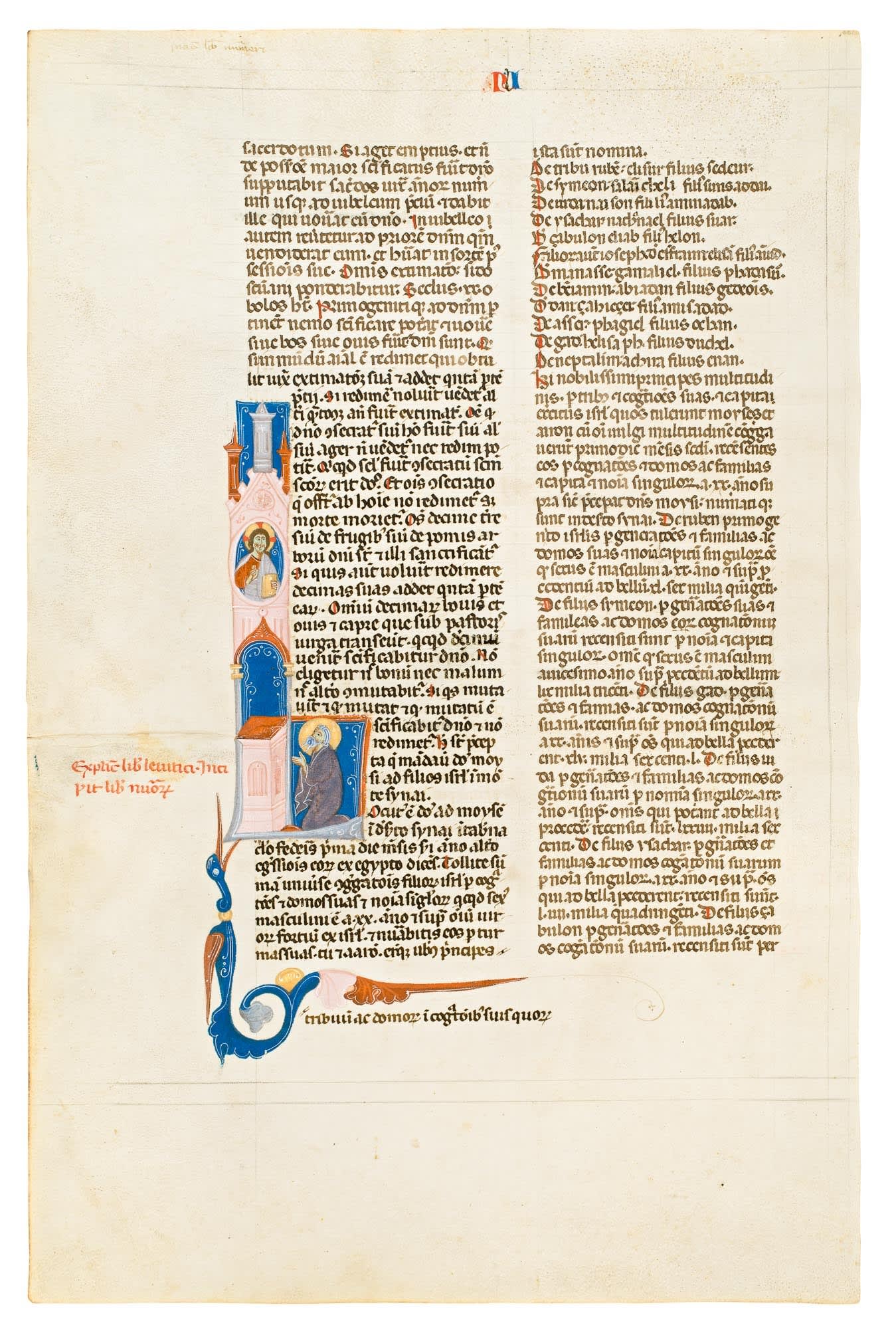 From a Bible made in Bologna, Italy, this leaf is a great example of the Bolognese Primo Stile illumination style. This leaf opens the Book of Numbers, and states: "And the Lord spoke to Moses in the desert of Sinai in the tabernacle of the covenant, the first day of the second month, the second year of their going out of Egypt." The artist has a delicate style, as shown in the careful rendering of Moses before the Lord. The artist also includes animals in his borders, as seen here in the charming duck holding the bottom corner of the initial L.
From a Bible made in Bologna, Italy, this leaf is a great example of the Bolognese Primo Stile illumination style. This leaf opens the Book of Numbers, and states: "And the Lord spoke to Moses in the desert of Sinai in the tabernacle of the covenant, the first day of the second month, the second year of their going out of Egypt." The artist has a delicate style, as shown in the careful rendering of Moses before the Lord. The artist also includes animals in his borders, as seen here in the charming duck holding the bottom corner of the initial L.
7) Christ giving Communion to his Disciples
or the Institution of the Eucharist
Historiated initial D on a leaf from a Missale Romanum
Italy, Umbria, possibly Perugia, c. 1320-1330
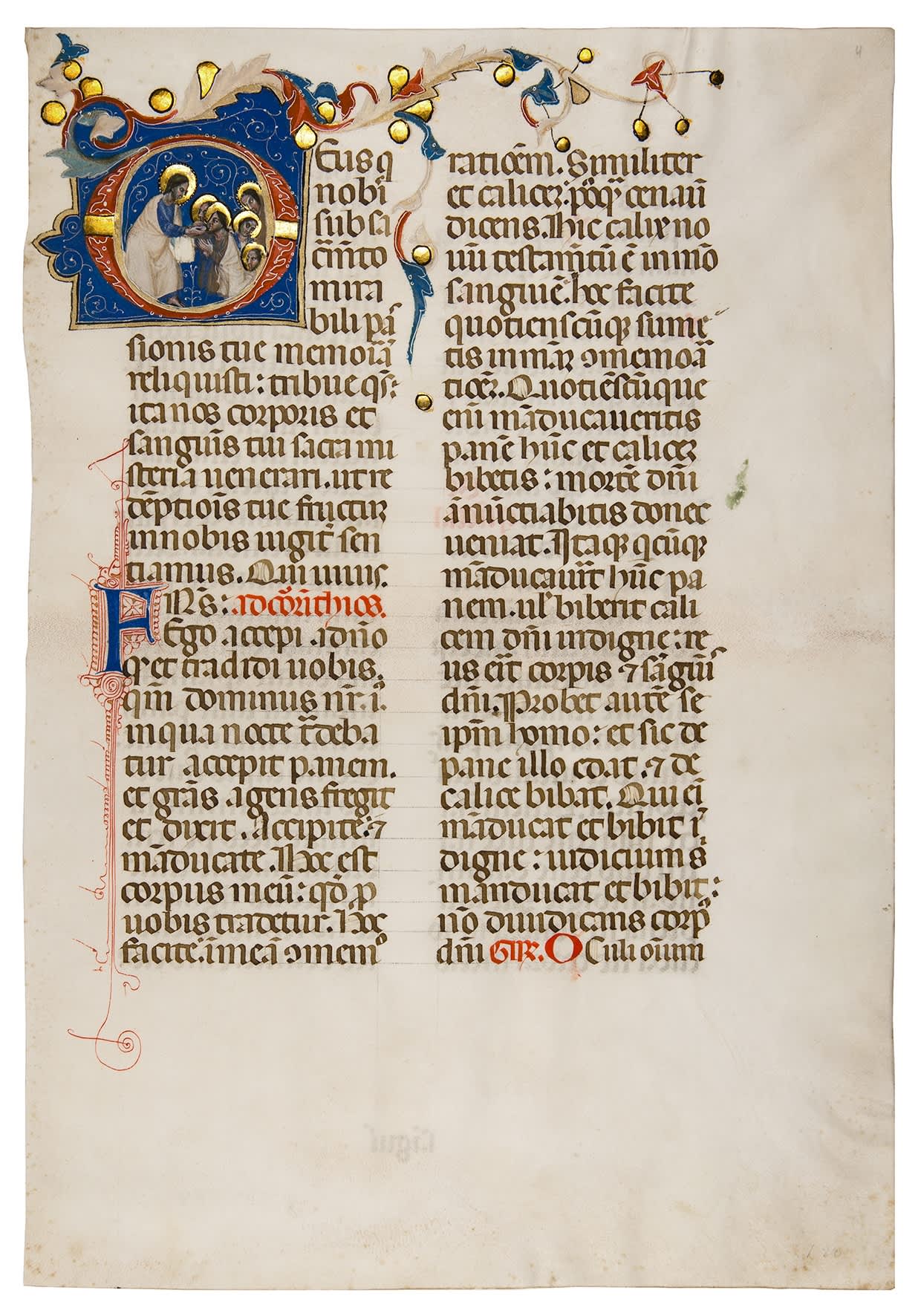
This stunning leaf comes from a Missal, or a book used for the performance of the Mass, made for the Augustinian order in Umbria. The text and illumination both celebrate the Feast of Corpus Christi, or the body of Christ. This leaf eventually made its way into the collection of the Princes of Liechtenstein.
This beautifully painted Lombard illumination shows the glowing scene of the Adoration of the Magi. The brilliant colours and shining gold celebrate the Epiphany feast in what was originally a Gradual, or a book to celebrate the Mass.
The present, Radiant Resurrection scene is a superbe celebration of the Easter miracle. The glowing figure of Christ shines above the stunned soldiers, all within an initial R formed by a column and two dolphins whose noses touch in the center. This sublime illumination would be a wonderful asset to any collection.
10) Gnadenstuhl Trinity
Illuminated leaf from an Antiphonal
Germany, Constance/Salem, 1550
This charming piece of music celebrates Trinity Sunday with a portrayal of the Holy Trinitiy within an initial B. Sprightly, wingled putti play in the margins. The leaf is dated 1550 at left. Painted by an illuminator liked to the Glocendon workshop in Nuremberg, this leaf is a rare example of manuscript illumination at such a late date.
If you'd like further information on these works of art or with starting your own collection, you can either follow the links above to our web gallery, or we would be happy to help you by email at info@guenther-rarebooks.com or by telephone at +41 61 275 7575.

